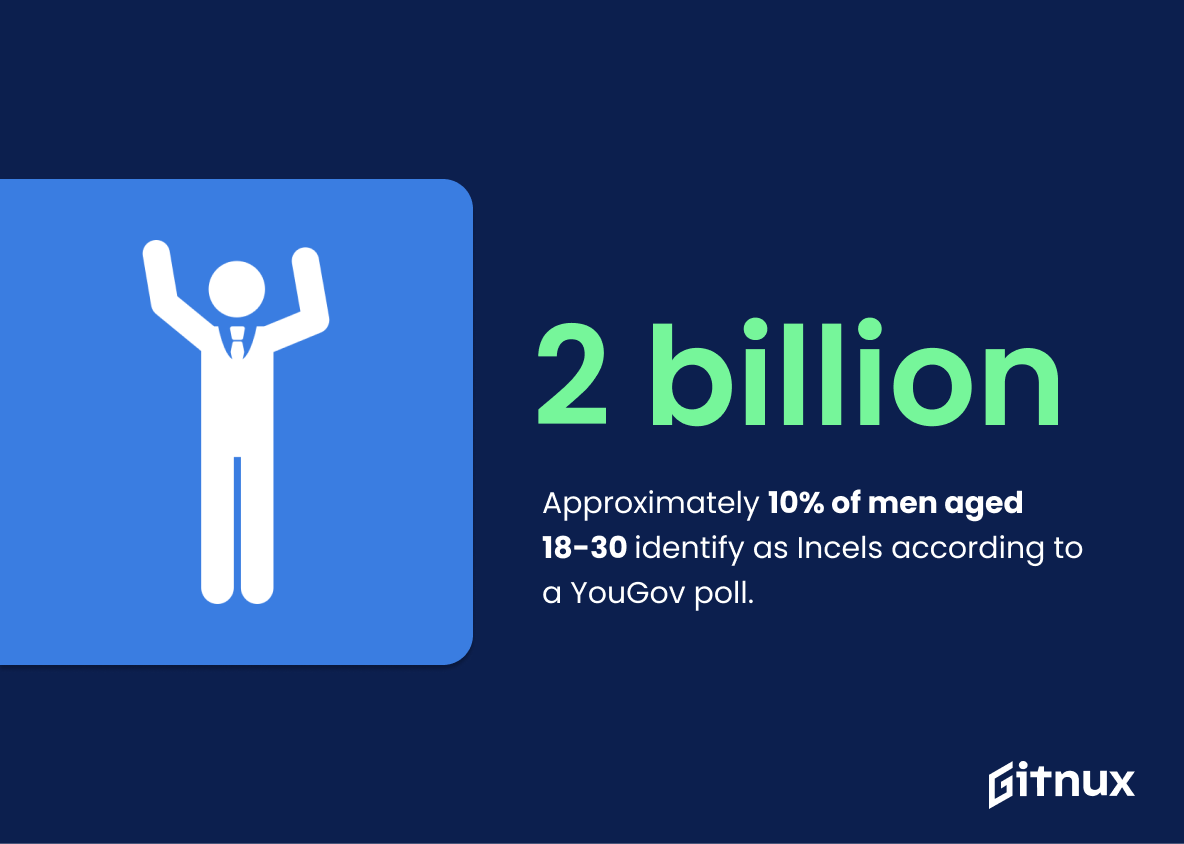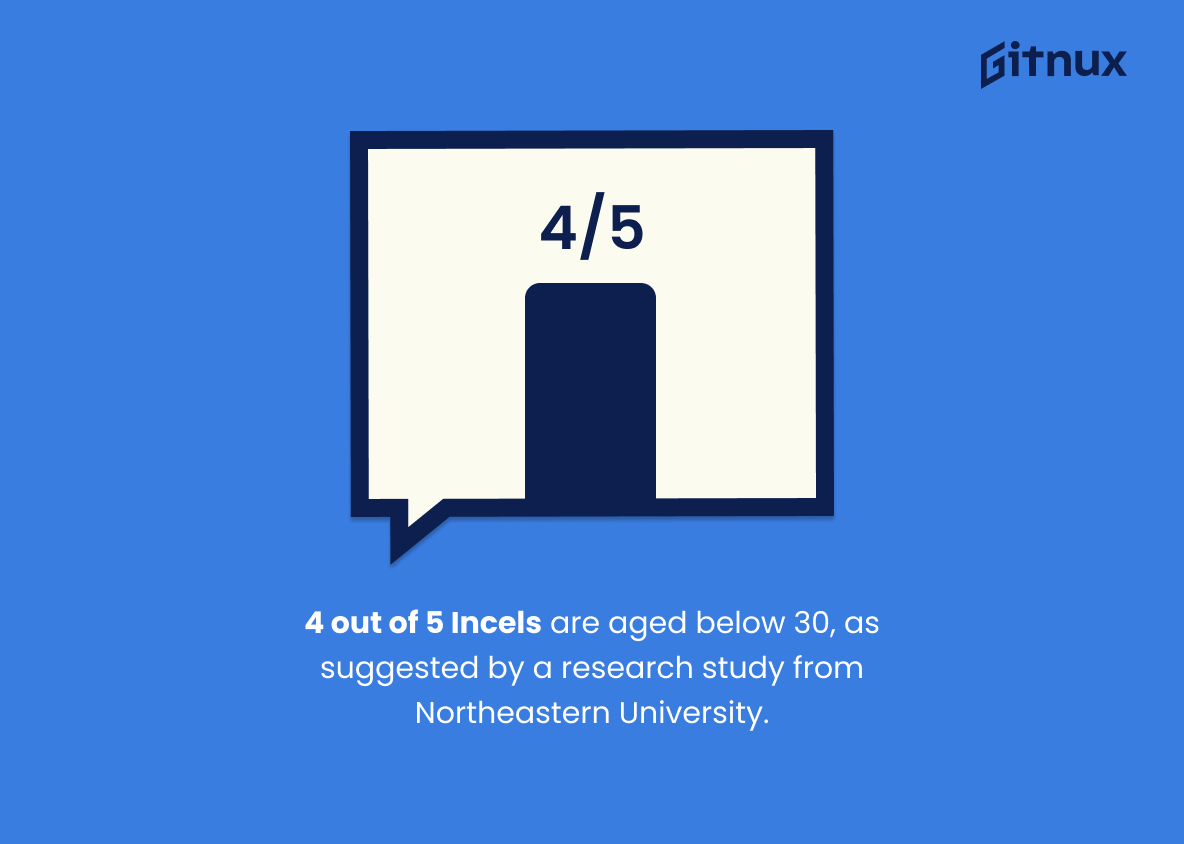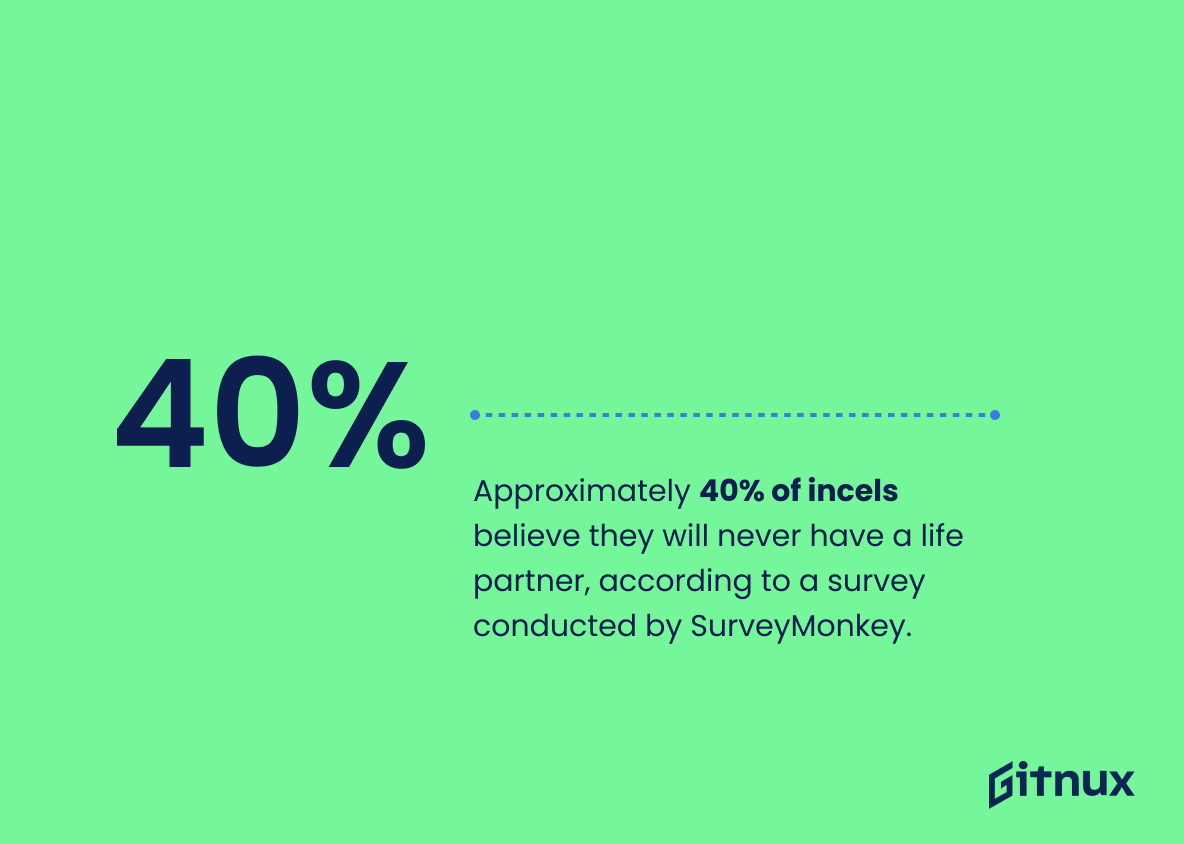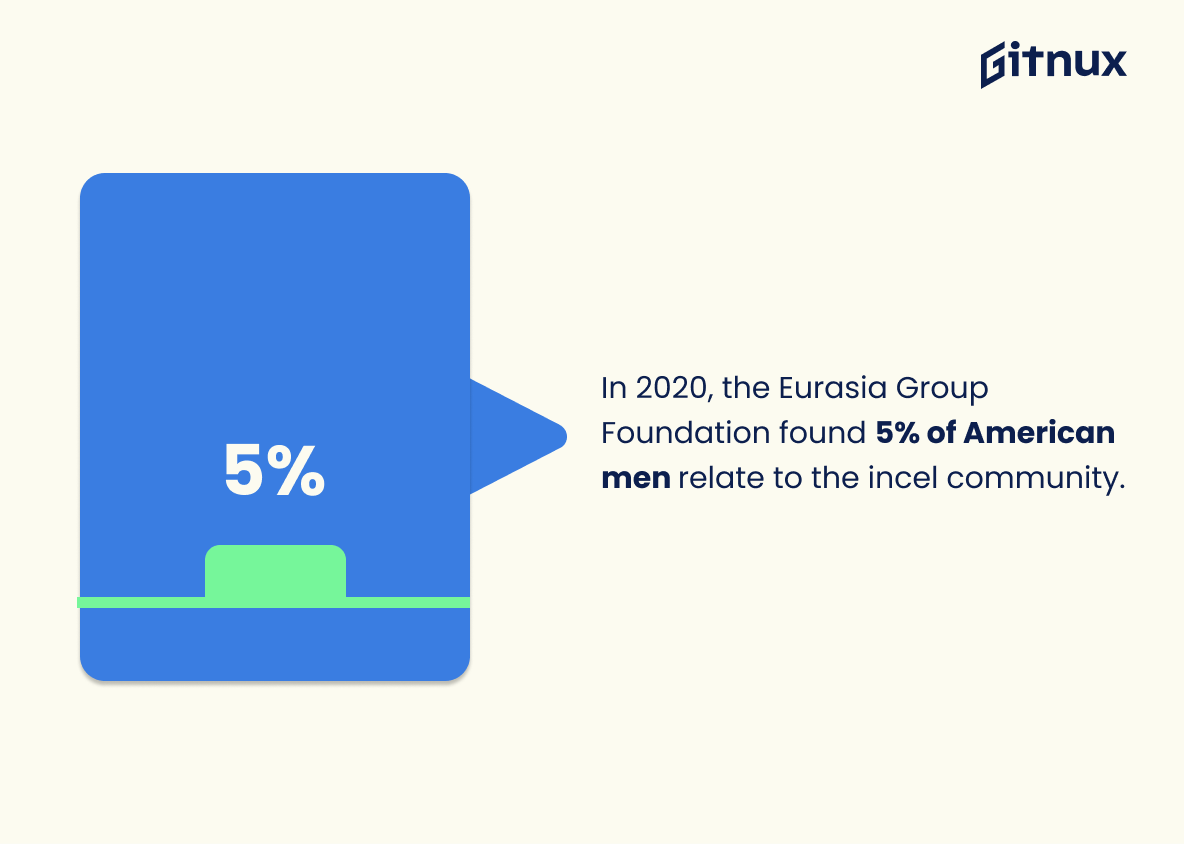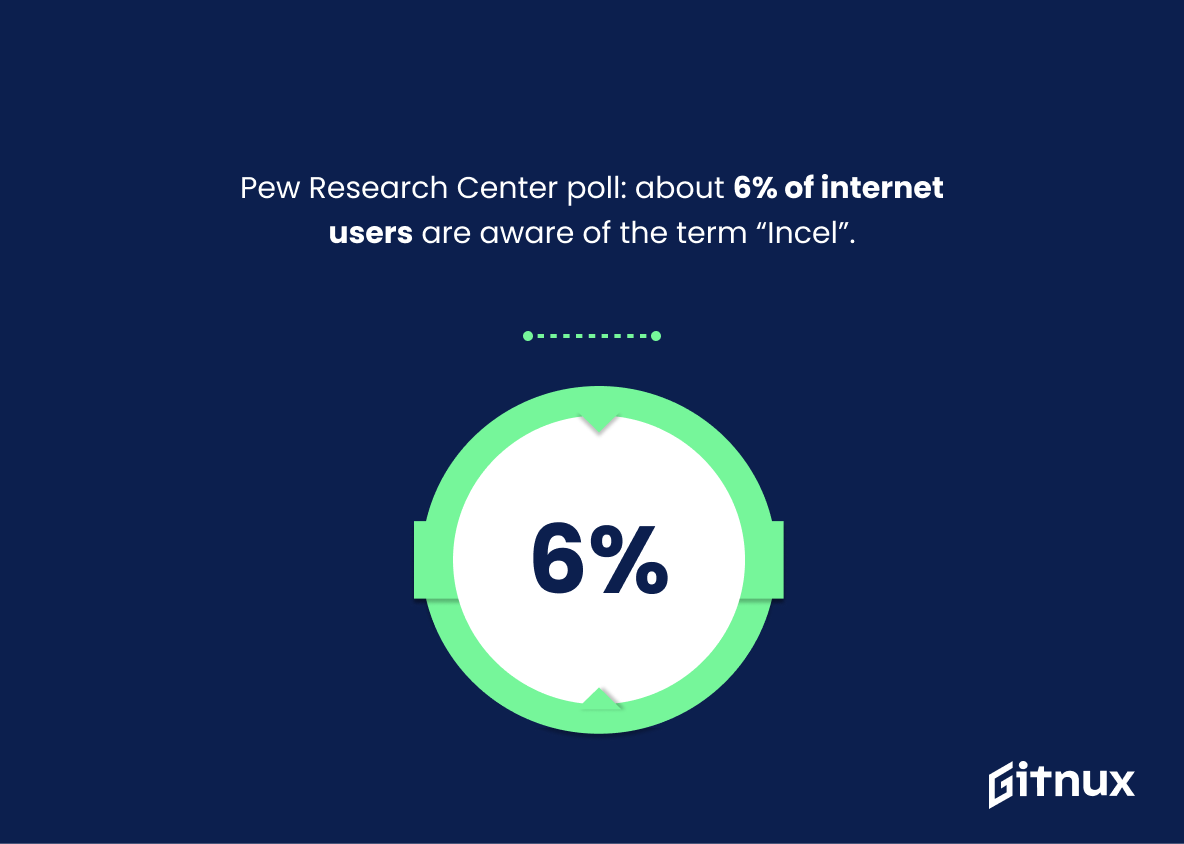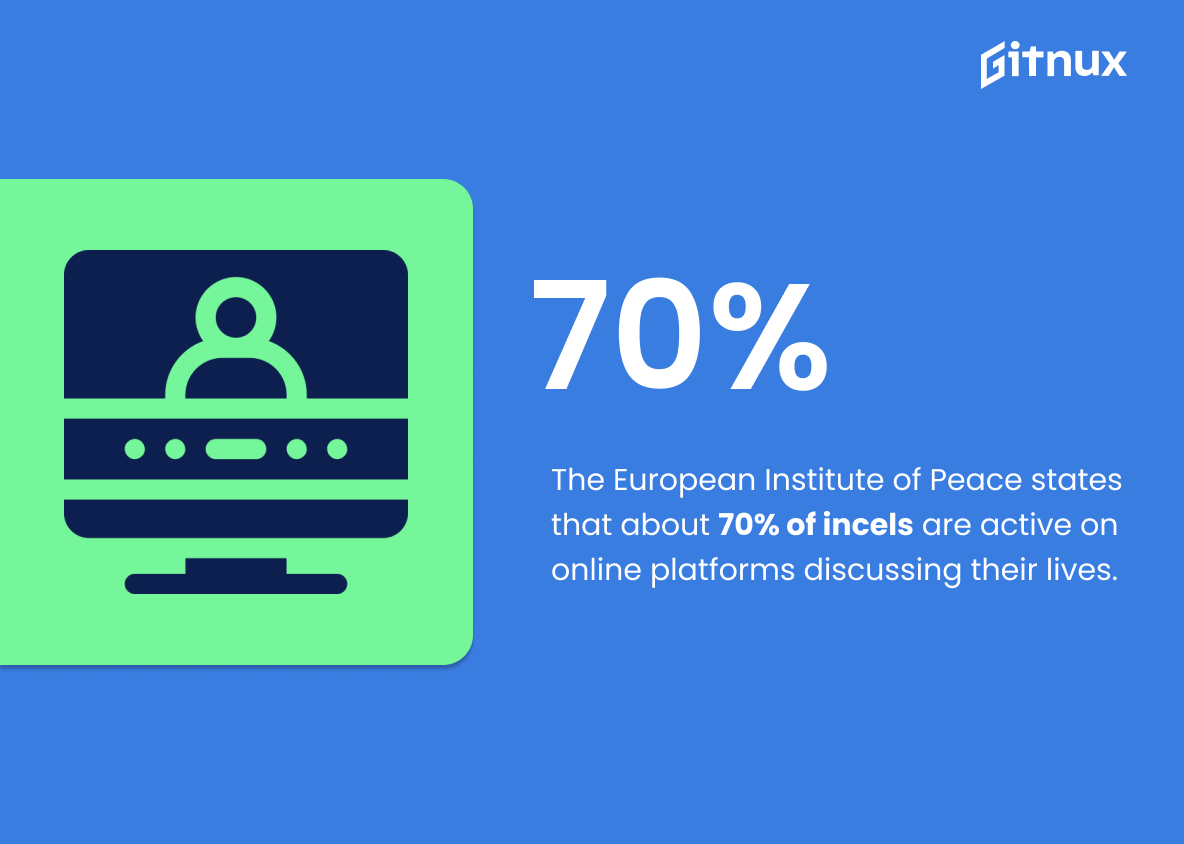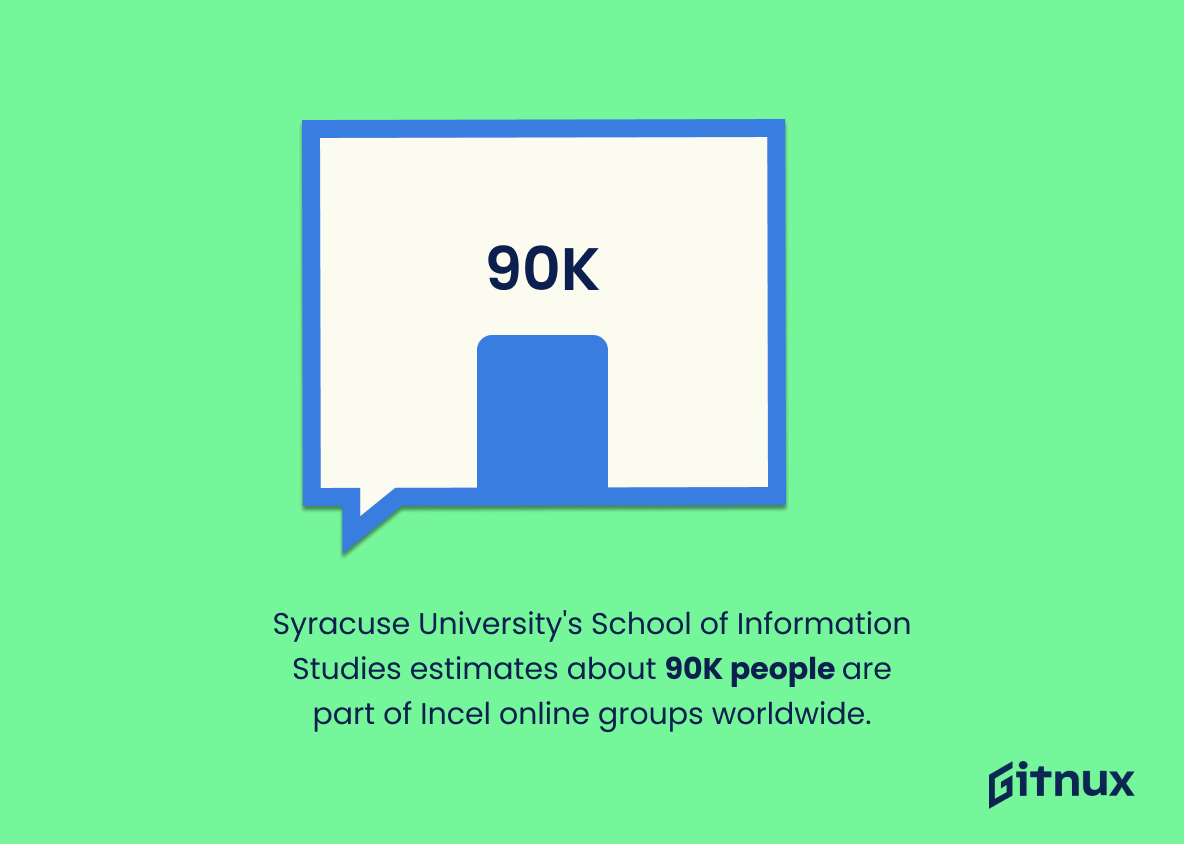In today’s digital age, the term ‘incel’ is a concept that has captured the attention of both mainstream media and internet communities alike. It refers to individuals, typically males, who self-identify as ‘involuntarily celibate.’ It’s a concept nowadays often associated with online forums and debates about gender dynamics and social interactions. Now, to address this subject more objectively and to get an insightful and realistic perspective, we’ve collected and collated a series of incel statistics. This blog post aims to delve deeper into these figures, offering a thorough and comprehensive analysis of the subject, shedding light on the prevalence, demographic details, trending sentiments, and other related facets of the incel community. Join us as we navigate through hard numbers and intriguing findings to understand the phenomenon better.
The Latest Incel Statistics Unveiled
Approximately 10% of men aged 18-30 identify as Incels according to a YouGov poll.
Delving into the details of the YouGov poll, the revelation that roughly one in ten men aged between 18-30 self-identify as Incels casts a profound light on societal issues hidden in our youth culture. This stark figure serves as a navigational beacon guiding us to deeper discussions and understanding about gender dynamics, socio-emotional health, self-image, and social isolation in millennial men. In the ecosystem of a blog post about Incel Statistics, this statistic is a monumental monument, encouraging readers to pause, reflect, and grasp the magnitude of this phenomenon. The journey doesn’t end here, but rather, this statistic sets the stage for more profound exploration into a subject that remains both invisible and potent in our social fabric.
4 out of 5 Incels are aged below 30, as suggested by a research study from Northeastern University.
Diving into the depths of Incel demographics, as highlighted by a research endeavor initiated at Northeastern University, the statistics convey a narrative both intriguing and arresting. It reveals that an overwhelming 80% of Incels find themselves in the age bracket of below 30. Now, why does this pique our interest, particularly in a blog post suffused with Incel Statistics?
In essence, illuminating this demographic distribution lends monumental weight to the understanding and analysis of the underlying reasons for this social phenomenon. It further provides a window into the younger generation’s psyche, their challenges, isolated feelings, and social interaction styles.
Not only does the statistic provide foundation for academia, it also strongly underlines the necessity for healthcare professionals, educators, policymakers, and parents to address this perhaps not so often discussed issue. Armed with this knowledge, preventative strategies, effective interventions, and supportive resources can be tailored to directly target this demographic.
In the grand narrative of the Incel movement, such a statistic also paints a focal picture of the likely group characteristics, the dynamism of its members’ interactions with society, and the potential risks or opportunities they may entail.
Thus, this particular statistic serves as a compass pointing towards the necessary discourse that should be initiated, beginning right at the stage of adolescence, to approach related societal concerns. By shedding light onto this aspect, we aren’t merely concerned with numbers alone but the lives those numbers represent- forming a profound testament to the importance of comprehensive understanding, empathy and action.
Approximately 40% of incels believe they will never have a life partner, according to a survey conducted by SurveyMonkey.
Delving into the complex world of incel statistics, this SurveyMonkey revelation is particularly telling, spotlighting a stark reality where an alarming 40% of incels perceive a future devoid of a life partner. Placed within the broader incel landscape, this snapshot paints an informative, albeit bleak, picture of their mental landscape and outlook on life, love and companionship, which is essential in our understanding moving forward. This piece of data acts as a key influencer that helps us decode behaviors, attitudes, and perhaps even potential risks, shaping the narrative of the blog post with its potent implications.
The Eurasia Group Foundation discovered in 2020 that 5% of American men identify, or sympathize, with the incel community
Diving into the depths of Incel statistics, it’s impossible to bypass one intriguing observation unearthed by the Eurasia Group Foundation in 2020, a finding that adds spice to the statistical soup. Unveiling a truth many may not have expected, it turns out that 5% of American men align or sympathize with the incel community. This revelation threads a critical narrative in our discussion – it showcases not a fringe group, but a significant proportion of American men, involved in the incel community. This research-savvy insight enhances understanding of the spread and depth of incel ideology, thus adding value to the intellectual discourse around the incel phenomenon.
According to a poll conducted by Pew Research Center, about 6% of internet users are aware of the term “Incel”.
In the river of the internet’s lexicon, the term “Incel” represents just a small tributary, at least according to a poll conducted by Pew Research Center. A mere 6% of internet users are even aware of this term, offering insight into its level of integration into mainstream digital discourse. For a blog post dissecting Incel statistics, this percentage serves as a pivotal starting point. It throws light on the level of public knowledge and understanding when addressing the size, impact, and potential influence of the Incel community. By incorporating this introductory statistic, the blog fosters a foundation for readers, allowing them to grasp the current global awareness of “Incel” while setting the stage for a deeper explorative dive into this relatively unknown internet subculture.
The European Institute of Peace claims that nearly 70% of incels are active members in online platforms where they discuss their personal lives.
Delving into the context of the rising Incel community worldwide, the assertion by the European Institute of Peace about nearly 70% of Incels actively discussing their personal lives on online platforms presents potential readers with a significant view into their world. This high participation level provides a critical insight into the shared experiences, frustrations, and thought processes of this group. It’s a launch pad for understanding how such platforms act as a haven for this community, buoying their beliefs and ideologies. Furthermore, it highlights the influence internet can have on creating and fueling subcultures, poignantly emphasizing the technological impact on the Incel phenomenon. Additionally, it underscores the need for strategic digital interventions, considering these platforms could potentially exacerbate dangerous ideologies and negative behavior amongst Incels.
It is estimated by Syracuse University’s School of Information Studies that around 90,000 people globally are part of Incel online communities.
In a blog post delving into the realm of Incel statistics, the factual nugget from Syracuse University’s School of Information Studies provides a deep-dive lens into an intangible landscape. With the spotlight on a global count of roughly 90,000 Incel members in online communities, the statistics serve as an anchor, quantifying the spread and influence of these ideologies. It instills a concrete foundation to the ethereal world of digital interaction, painting a stark picture of the online societal groupings, and ultimately allows us to grasp our understanding of the massive Incel-osphere. It’s a compass setting the direction for our journey into the heart of the Incel community, allowing us to successfully navigate this multifaceted domain. It’s not just a piece of data, it’s a portal to a reality we seek to understand and delve deeper into.
Conclusion
The world of Incels, although often misunderstood and skewed in perception, is a significant subculture that can’t be ignored. These statistics have provided a glimpse into the size, attitudes, and characteristics of this community. Many of them are suffering, feeling isolated and vilified, often leading to detrimental consequences. It’s essential to foster constructive dialogues about inceldom, addressing not only the societal issues they raise but also providing appropriate mental health support. Rather than stigmatizing and dismissing them, an empathetic approach could be more effective. Ultimately, understanding these statistics is the first step towards finding potential solutions for a problem rooted in complex societal issues.
References
0. – https://www.www.pewresearch.org
1. – https://www.www.surveymonkey.com
2. – https://www.www.eurasiagroup.net
3. – https://www.surface.syr.edu
4. – https://www.today.yougov.com
5. – https://www.news.northeastern.edu
6. – https://www.www.eip.org
